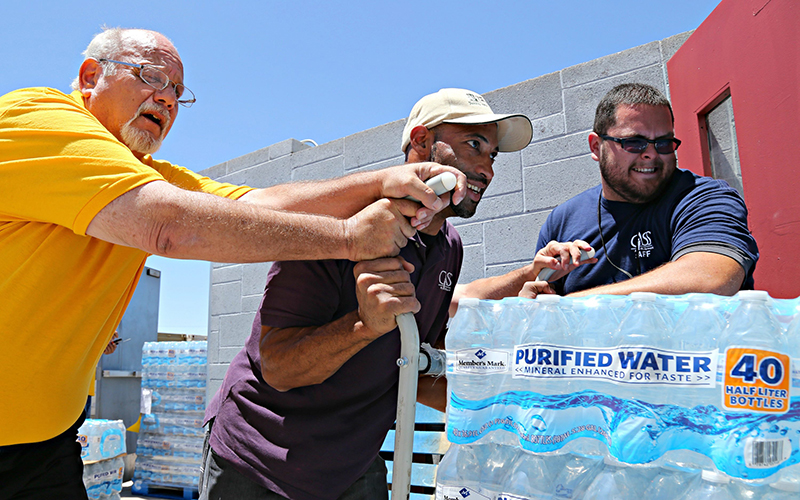LOS ANGELES – It’s a dry heat, Phoenix residents like to say about Arizona’s hot weather. That bravado may vanish as the thermometer flirts with 120 degrees (49 C) this weekend.

Phoenix won’t be alone in the oven. A strengthening ridge of high pressure lifting out of Mexico is on course to also scorch other parts of Arizona and Southern California, bringing potentially record-shattering temperatures.
READ MORE: California blaze points to another bad year for wildfires
Though accustomed to triple digits, the upcoming heat spell is a rarity in Phoenix, a desert metropolis of 1.5 million people, raising concerns of heat stroke.
Temperatures are predicted to hit 118 degrees (48 C) in Phoenix on Sunday and peak at 119 (48.3 C) degrees Monday. Such heat is “rare, dangerous and deadly,” according to a National Weather Service warning.
“This is extreme even for our standards,” said Matthew Hirsch, a weather service meteorologist in Phoenix.
READ MORE: May 2016 sets temperature record for 8th consecutive month: NASA
The hottest day on record in Phoenix occurred June 26, 1990, when the thermometer reached 122 degrees (50 C).
Extreme heat is likely to become more common, scientists say, blaming man-made greenhouse gas pollution.
“We should anticipate more and more of this extreme heat, and we’re getting to feel it firsthand. It is what global warming looks and feels like,” University of Arizona climate scientist Jonathan Overpeck said in an email.
During heat waves, people should watch for signs of heat exhaustion and heat stroke, including high body temperature, dizziness and nausea. If untreated, heat stroke can lead to disability or even death.
Health experts say even a difference of a few degrees outside can cause the body temperature to spike, potentially affecting the brain and other organs. The elderly, babies and those with health problems are especially vulnerable because they can’t cool down as fast.
Between 2006 and 2010, some 3,000 Americans died from heat-related illnesses, according to government statistics.
“No one needs to die in a heat wave, yet we do have deaths. They’re all preventable,” said Kristie Ebi, a professor of global health at the University of Washington.
READ MORE: 4 things Canada needs to do to prepare for extreme weather events
Earlier this month, a swath of the West Coast sweltered under heat warnings that forced sporting events to start in the evening and festivals to ditch some of the usual pomp and circumstance. Phoenix experienced its earliest recorded 115-degree day on June 4.
On Friday, the agency that operates California’s wholesale power system said it’s preparing for the heat and may ask residents to voluntarily conserve power to prevent rotating outages.
Death Valley, California, which bills itself as the hottest place on the planet, is expected to live up to its reputation. Temperatures are predicted to exceed 120 (49 C) degrees next week, according to government forecasters.
Las Vegas is expected to see temperatures up to 112 (44 C) for the weekend. By the middle of next week, the high pressure ridge is expected to shift toward the Four Corners region – southwestern Colorado, southeastern Utah, northeastern Arizona and northwestern New Mexico, which will likely see above-normal temperatures.
READ MORE: Canada in 2050: a land of climate-change extremes at current emissions levels
As in previous heat waves, those living in high heat zones are urged to limit outdoor activities this weekend and to seek shelter in air-conditioned buildings. People should also stay hydrated and drink plenty of water.
June is typically the warmest – and driest – month for desert Southwest states. This toasty period is followed by the monsoon season marked by dust storms, flash floods and lightning.
Until then, “it’s just plain hot. There are no other words,” said Kelly Redmond, deputy director of the Western Regional Climate Center in Nevada.
It’s bound to get hotter in the future, researchers say. A recent study by the National Center for Atmospheric Research in Colorado calculated that summers across much of the globe later this century could be warmer than any summer experienced so far if current emissions continue.



Comments